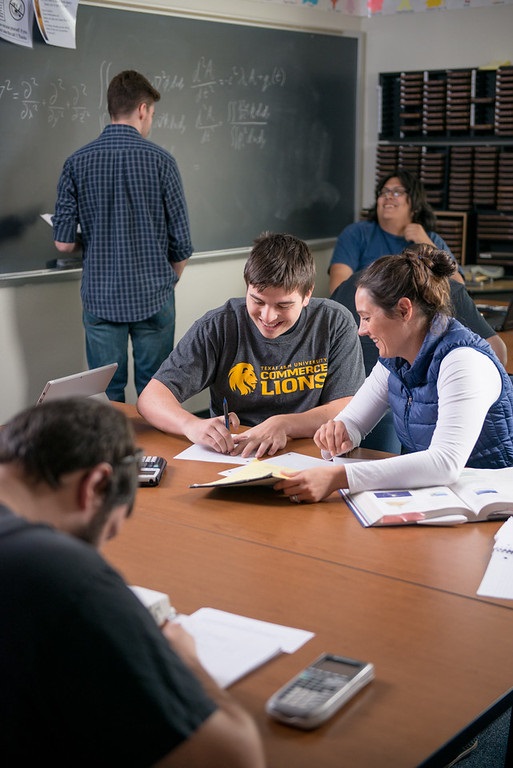August 15, 2024 – The Department of Education grant aims to improve retention and graduation rates for first-time, full-time students at A&M-Commerce.
COMMERCE, TX, August 15, 2024— Texas A&M University-Commerce is set to boost student success with a transformative $2.2 million grant from the U.S. Department of Education.
Known as Title III Part A – Strengthening Institutions Program, the grant aims to help colleges and universities increase their capacity to serve low-income students. A&M-Commerce was one out of only six institutions in Texas, 107 nationwide, chosen to receive the grant in October 2023. Funds will be disbursed to the university over five years.
Dr. Sherece Shavel, director of the Title III program at A&M-Commerce, predicts that Title III funding will significantly impact student success.
“A&M-Commerce now has a new layer of capacity to reach, impact and support the needs of students who may have previously fallen through the cracks,” she said.
Four strategies to bolster student success
A&M-Commerce is using the grant money to implement four student support initiatives aimed at helping first-time, full-time students succeed in college:
1. Centralized Success Center: A success center in the university’s Waters Library will enable students to access several supportive services in one centralized location. They include the Office of Student Career Preparedness, Blue to Gold Money Management Center, Student Transition and Support, Academic Advising, and Undergraduate Tutoring Services.
2. Academic Advising: The university will also enhance its Academic Advising services. Advisors from all academic areas will relocate to Waters Library so students can more easily access support. In addition, the advising model is being refreshed. Advisors will become more proactive in reaching out to students at several points during their college careers to help ensure they are on track for graduation and career success.
3. Student Career Preparedness: The Office of Student Career Preparedness is expanding its ability to deliver a broad menu of career services. Services include helping students:
- write effective resumes
- acquire strong interviewing skills
- understand the career implications of changing majors
- find internships, externships and apprenticeships
- understand what they can do with their chosen major and how it translates into a career
“As soon as students are admitted to the university, the Office of Student Career Preparedness will talk to them and help them perceive their entire academic experience with the value of their careers in mind,” Shavel said.
4. Blue to Gold Money Management Center: A team of dedicated money coaches was hired to serve the new Blue to Gold Money Management Center. The coaches help students with various financial issues related to college life and beyond, including:
- understanding the financial implications of switching majors
- deciphering tuition and fees
- managing financial aid money
- ensuring students have sufficient financial resources to persist through graduation
- budgeting and saving money
- establishing healthy relationships with money
Wrap-around services for student success
The four initiatives discussed above are meant to converge in a wrap-around model of student care designed to envelop students in supportive resources even before they request them. Staff will reach out to students earlier and more often to help them acquire the tools they need to succeed.
“We’re creating that structure around helping students, and that’s why they’re called wrap-around services,” Shavel said. “Particularly with first-year, first-time students, there is a need for that extra level of support. Transitioning from high school into the university setting can be challenging,” she said.
The big goal: retention through to graduation
The overarching goal for the university’s Title III program is to boost the four-year retention rate by 9% over the next five years. In higher education, “retention rate” refers to the number of first-time undergraduate students who return to the same institution the following fall.
Student retention is a concern at universities statewide. Based on 2019 data from the Texas Higher Education Coordinating Board, only 41.5% of first-time, full-time university students in Texas who remain at the same institution graduate within four years. A&M-Commerce sits slightly below the state average at around 31%.
Drs. Ricky Dobbs, senior vice provost, and Brent Donham, vice president for Research and Academic Development, who were instrumental in helping secure the grant for A&M-Commerce, are confident that the funds will positively affect student retention.
“This grant is aimed at addressing longstanding gaps in student support,” Dobbs said. “These are known areas of challenge where the right types of support could help with retention and, ultimately, graduation.”
“The Title III grant will go a long way in our mission to transform lives,” Donham added.






